The views expressed in our content reflect individual perspectives and do not represent the authoritative views of the Baha'i Faith.
On the night of Monday, December 2, 1912, Abdu’l-Baha gave a seminal talk, prompted by this query: “… some have asked the question as to what are the new things that Baha’u’llah has taught …”
In one of the records of Abdu’l-Baha’s addresses and speeches in North America, The Promulgation of Universal Peace, Howard MacNutt later edited that question to read, “You have asked me what new principles have been revealed by Him.”
In response to this key question, Abdu’l-Baha said, “… were I to continue to tell you more of these new teachings the subject would not be exhausted even if I spoke all night.”
RELATED: How Humanity Can Finally Create a Peaceful Global Society
The Baha’i Faith, then, is no mere re-statement of the religions of old — instead, Baha’u’llah brought numerous new teachings suited for the modern world. The most important of those teachings — the oneness of humanity — is now revolutionizing the world, slowly but surely.
The social details of the December 2, 1912 event are lacking, but we do know that the diplomat Ali-Kuli Khan served as the interpreter and that the professional stenographer Esther Foster took stenographic notes of the talk, according to the first published version in Star of the West magazine.
The following is the beginning of the transcribed contemporaneous translation, as originally published:
You are all welcome! This is a good assemblage. Praise be to God … The souls are rejoiced by the glad-tidings of God. This is an excellent gathering.
This evening I wish to speak to you concerning the special teachings of Baha’u’llah. All the teachings which have been given during the past days and ages are to be found in the Revelation of Baha’u’llah; but in addition to those, this Revelation has certain new teachings which are not to be found in any of the religious books of the past. I shall now refer to some of the new teachings given by Baha’u’llah; as for the rest of them you may obtain them from the Tablets and Epistles written by Baha’u’llah, for the new teachings given by Baha’u’llah are many.
While in the Hidden Words we read concerning that which has descended upon the Prophets of the past, yet there are in the Hidden Words teachings which are new and particular to this Revelation. Then the Tablet of the Glad-Tidings revealed by Baha’u’llah contains special teachings. The Tablet by Baha’u’llah called, The Words of Paradise, contains special teachings. Again the Tablet of Tajalliat [Tajallíyát (Effulgences)] contains special teachings by Baha’u’llah. Similarly, all the other Tablets of Baha’u’llah contain new teachings which have not been revealed in any Books and Epistles of the past Prophets. Likewise in the Book of Akdas [The Kitab-i-Aqdas: The Most Holy Book] there are new teachings which are not to be found in any of the past Books or Epistles. When you peruse those teachings you shall comprehend this fact.
Now I shall speak of a few of those teachings. For instance, the Oneness of the world of humanity is one of the teachings of Baha’u’llah, for Baha’u’llah addresses Himself to the world of men, saying, “Ye are all leaves of one tree and the fruits of one arbor.” That is, the world of existence is no other than one tree, and the nations or peoples are like unto the different branches or limbs thereof, and human individuals are similar to the fruits and blossoms thereof. Thus Baha’u’llah presented the Oneness of the world of humanity, while in all past religious Books and Epistles, the world of humanity has been divided into two parts: one called the people of the Book, or the Pure Tree, and the other, the Evil Tree. One-half of the people of the world were looked upon as belonging to the faithful, and the other half as belonging to the irreligious and the infidel; one-half of the people were consigned to the mercy of their Creator, and the other half were considered as objects of the wrath of their Maker.
But His Holiness, Baha’u’llah, proclaimed the Oneness of the world of humanity, and this teaching is specialized to the teachings of Baha’u’llah, for He submerged all mankind in the Sea of Divine Generosity. At most some of the people are asleep, they need to be awakened; some of them are ill, they need to be healed; some are children, they need to be trained. In a word: this teaching is a special one of the teachings of Baha’u’llah.
A word on authenticity and authority: As a practicing attorney, I regularly take the depositions of key fact witnesses, which requires the services of professional court reporters, who now have sophisticated stenographic equipment (and software) in order to create an accurate, verbatim transcript of the sworn testimony, which is admissible in court as part of the “evidence of record.” Of course, checking stenographic notes with a contemporaneous audio recording ensures accuracy, but that audio technology didn’t exist in 1912.
That said, I have the greatest respect for the integrity and accuracy of professionally trained stenographers. Certainly, the stenographers who took notes during Abdu’l-Baha’s November 15, 1912 talk — Hooper Harris — and the December 2, 1912 talk — Esther Foster — recorded what the stenographers themselves heard by way of contemporaneous translation. They then created a reliable record of what the rest of the audience heard, as well.
That’s why this transcript of Abdu’l-Baha’s December 2, 1912 talk (as well as the transcript of his similar talk on November 15, 1912) has historical value, even though the text of the talks themselves could not be authenticated, for lack of Persian originals.
On September 14, 2023, however, the original Persian transcript of Abdu’l-Baha’s December 2, 1912 talk was published online — over 110 years after this signal event. This rediscovered original (and therefore newly-authenticated) Baha’i text was quietly added to the Baha’i Reference Library, under “authoritative-texts/abdul-baha/additional-tablets-talks-abdul-baha.” No announcement. No press release. No fanfare. The text of this important talk is now authenticated and authoritative, but still awaits an authorized official translation under the auspices of the Universal House of Justice, at the Baha’i World Center in Haifa, Israel. See “When New, Authentic Baha’i Teachings Come to Light.”
During that same night, on December 2, 1912, three photographs were taken by a noted celebrity photographer, Jacob Schloss. You can see those photos in a talk I presented on Sunday, September 18, 2022, titled, “And universal peace—in what Book is this written?” for the “Special Guest Speakers Series” hosted by Baha’i Chronicles, the Zoom video of which is available online, along with the PowerPoint presentation. The talk explains how and why Abdu’l-Baha identified new and distinctive Baha’i principles.
As demonstrated in my introductory book, Baha’i Faith: The Basics, the substance of these talks can also be corroborated by their reference to fully authenticated, written statements by Abdu’l-Baha, such as his “First Tablet to The Hague” from 17 December 1919. The value of the Talk Given by Abdu’l-Baha in Port Sa’id on 19 June 1913 is that a transcript of the original Persian exists. Evidently, it relates back to Abdu’l-Baha’s very interesting rhetorical questions, challenging the audience to search in the Bible and in other past holy books to see if they can find any of Baha’u’llah’s new teachings — with the presumed answer that this would be quite impossible.
RELATED: Humanity’s Last, Best Hope for Unity and Peace
This “history of ideas” approach can be useful in mapping out the trajectories of humanity’s ideas across time and in finding the early glimmerings of Baha’i principles, as set forth in prior sacred texts, in embryonic forms.
As for how this foundational Baha’i principle of the oneness of humanity — the cornerstone, touchstone, and lodestone of all Baha’i teachings — also functions as a prophecy, we can see the prophetic predictions in this passage from Abdu’l-Baha’s “Commentary on the Eleventh Chapter of Isaiah” in Some Answered Questions:
The five continents of the world will become as one, its divers nations will become one nation, the earth will become one homeland, and the human race will become one people. Countries will be so intimately connected, and peoples and nations so commingled and united, that the human race will become as one family and one kindred. The light of heavenly love will shine and the gloomy darkness of hatred and enmity will be dispelled as far as possible. Universal peace will raise its pavilion in the midmost heart of creation and the blessed Tree of Life will so grow and flourish as to stretch its sheltering shade over the East and the West. Strong and weak, rich and poor, contending kindreds and hostile nations — which are like the wolf and the lamb, the leopard and kid, the lion and the calf — will treat one another with the utmost love, unity, justice, and equity. The earth will be filled with knowledge and learning, with the realities and mysteries of creation, and with the knowledge of God.
In this beautiful vision of a future unified world, the Baha’i teachings prophesize the coming of humanity’s Golden Age.


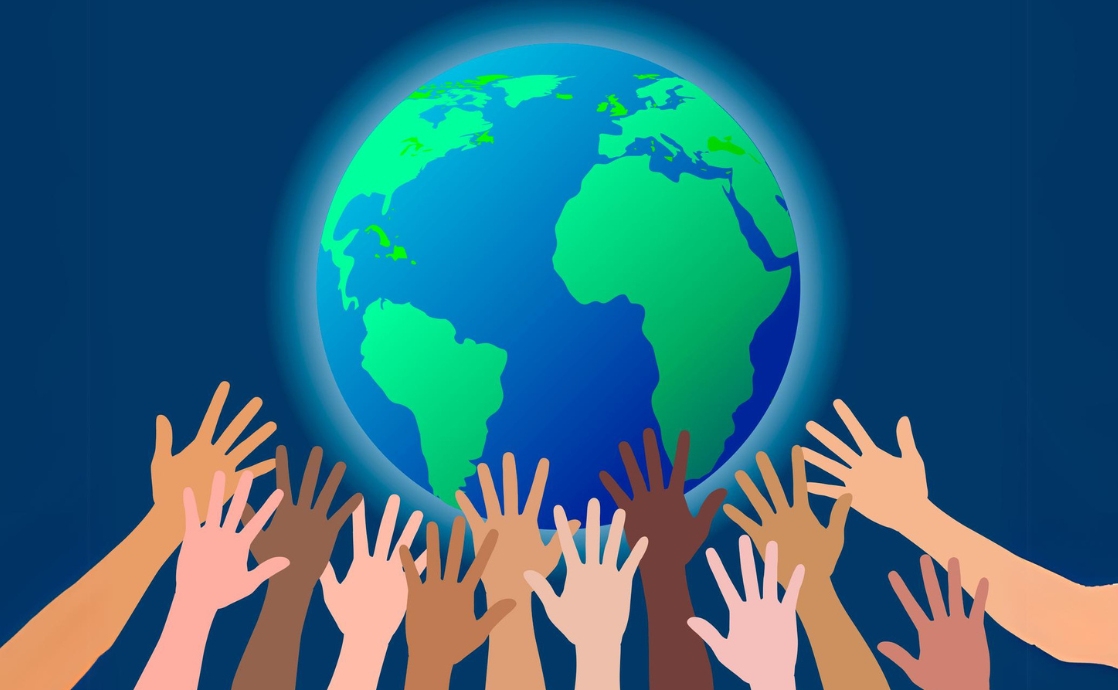


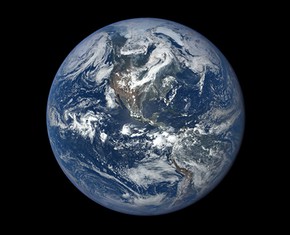

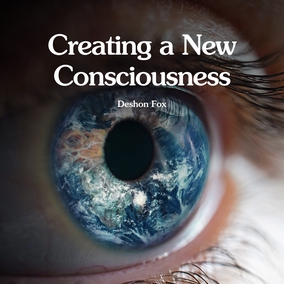


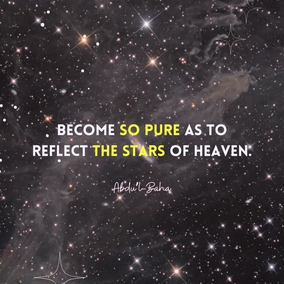

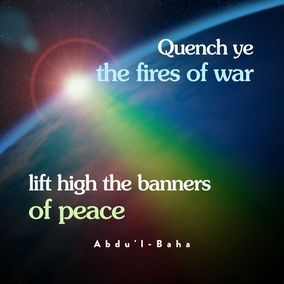
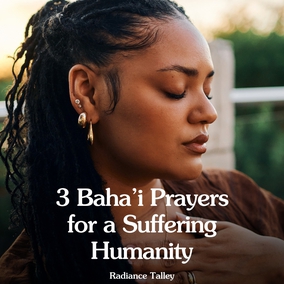


Comments
Sign in or create an account
Continue with Googleor